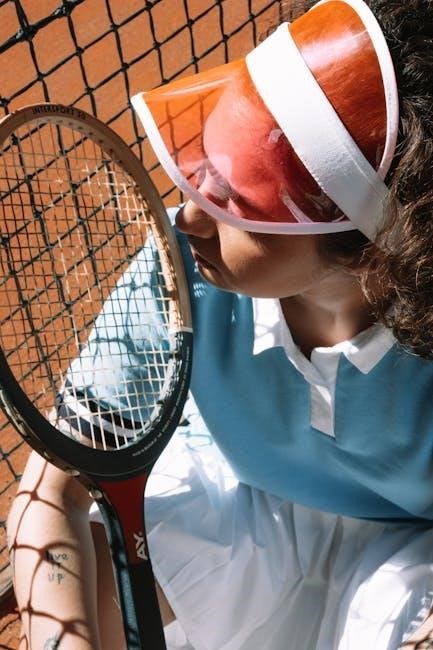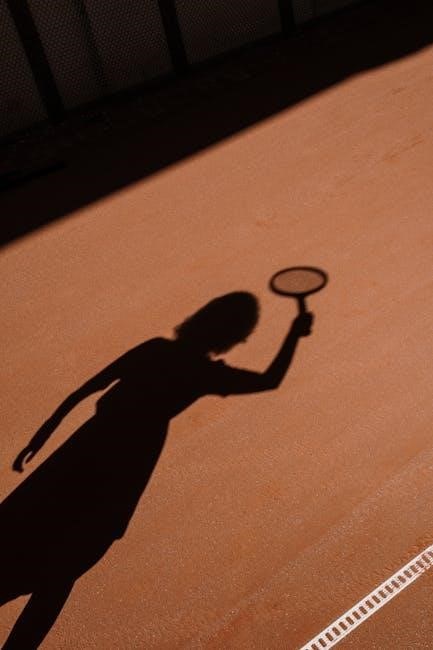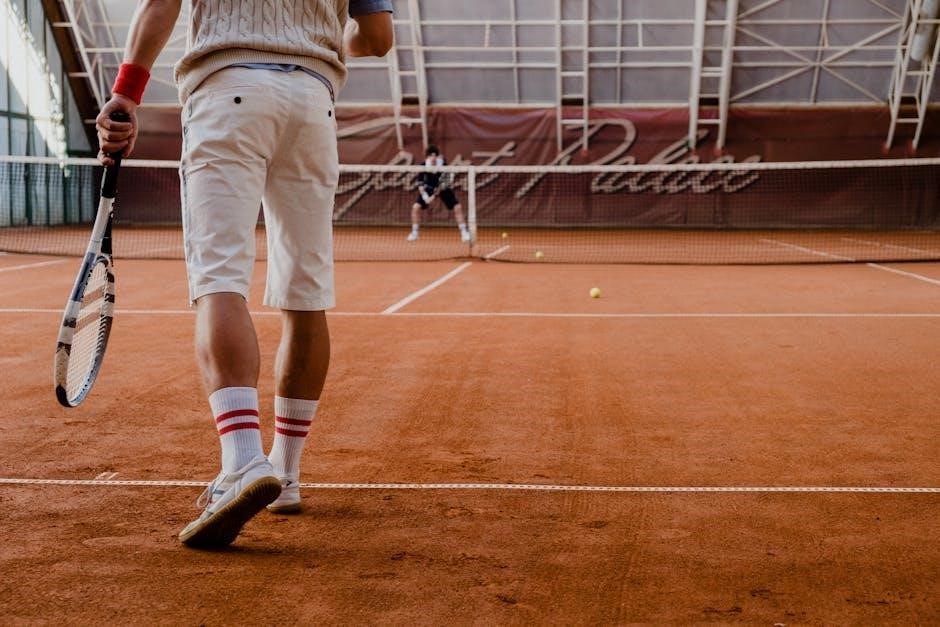Choosing the right tennis racket can be a complex task, with many options available for all skill levels. Factors like playing style, frequency of play, and budget play a crucial role. This guide offers insights to help you navigate the selection process and find the racket best suited to your game.

Understanding Your Playing Level
Selecting the right tennis racket hinges significantly on accurately assessing your current playing level. Are you a beginner just starting to learn the fundamentals of the game? Or perhaps an intermediate player with a solid grasp of basic techniques, looking to refine your skills and consistency? Maybe you’re an advanced player competing regularly, seeking a racket that enhances your power, control, and precision.
For beginners, a more forgiving racket with a larger head size is often recommended. This provides a bigger sweet spot, making it easier to make consistent contact with the ball. Intermediate players might benefit from a racket that offers a blend of power and control, allowing them to develop their strokes further. Advanced players typically seek rackets that provide greater feel and precision, enabling them to execute complex shots with accuracy.
Consider your strengths and weaknesses on the court. What areas of your game do you want to improve? Understanding your playing level will guide you towards a racket that complements your abilities and supports your development as a tennis player. Don’t hesitate to consult with a tennis professional or experienced player for personalized recommendations.
Head Size: Oversized vs. Mid-Size

The head size of a tennis racket significantly impacts its power, control, and forgiveness. Oversized rackets, typically ranging from 100 to 110+ square inches, offer a larger sweet spot. This means that even off-center hits can still generate decent power and maintain control, making them ideal for beginners and players seeking more forgiveness. The larger hitting area also helps in returning shots more easily.
Mid-size rackets, generally between 85 and 98 square inches, provide a greater sense of control and precision. While they require more accurate hits, they allow advanced players to dictate the ball’s placement and spin with greater finesse. The smaller head size enhances maneuverability, enabling quicker reactions at the net and faster swing speeds.
Choosing between oversized and mid-size depends on your playing style and skill level. If you’re a beginner or struggle with consistent contact, an oversized racket can provide the extra help you need. However, if you’re an experienced player prioritizing control and feel, a mid-size racket might be a better fit. Consider your strengths and weaknesses to make an informed decision.
Grip Size Selection
Selecting the correct grip size is crucial for comfort, control, and preventing injuries. A grip that is too small can cause you to over-grip, leading to tension in your arm and potential tennis elbow. Conversely, a grip that is too large can limit your wrist mobility and make it difficult to generate power and spin.
To determine the right grip size, you can use the “ruler test.” Hold your racket with an eastern forehand grip and place a ruler along the inside of your palm, extending from the bottom lateral crease up to the tip of your middle finger. The measurement in inches corresponds to your approximate grip size. Alternatively, you can try gripping a racket and see if you can comfortably fit your index finger between your fingertips and the base of your palm.
Grip sizes typically range from 4 1/8 inches to 4 5/8 inches. If you’re between sizes, it’s generally better to opt for the smaller size, as you can always add an overgrip to increase the thickness. Experiment with different grip sizes and overgrips until you find a combination that feels comfortable and allows you to maintain a relaxed yet secure hold on the racket.
Racket Weight and Balance
Racket weight significantly impacts swing speed, power, and maneuverability. Heavier rackets generally offer more power and stability, making them suitable for players with strong swings. However, they can be harder to swing quickly and may cause fatigue over extended play. Lighter rackets are easier to maneuver and swing faster, ideal for players who prioritize quick reactions and generating spin. Beginners often benefit from lighter rackets to develop proper technique.
Balance refers to how the weight is distributed throughout the racket. Head-heavy rackets have more weight concentrated in the head, providing extra power and stability on groundstrokes. Head-light rackets have more weight in the handle, offering better maneuverability and control at the net. Evenly balanced rackets distribute weight evenly, providing a blend of power and maneuverability.
The ideal weight and balance depend on your playing style and physical strength. Experiment with different weights and balances to find what feels most comfortable and allows you to play your best. Consider demoing rackets before making a purchase to get a feel for how they perform on the court.
String Pattern Considerations
The string pattern of a tennis racket refers to the arrangement of the strings on the racket head, specifically the number of main strings (running vertically) and cross strings (running horizontally). Common string patterns include 16×19, 16×18, and 18×20. The string pattern significantly impacts the playability of the racket, influencing factors like power, spin potential, and control.
Open string patterns (e.g., 16×19) have wider gaps between the strings, allowing the ball to sink deeper into the string bed. This results in greater ball pocketing, increased spin potential, and a more forgiving feel. Open patterns are generally preferred by players who prioritize spin and power.
Dense string patterns (e.g., 18×20) have closer spacing between the strings, providing a flatter, more controlled trajectory. Dense patterns offer enhanced control, directional accuracy, and durability. They are often favored by players who prioritize precision and a flatter hitting style.
When selecting a racket, consider your playing style and desired characteristics. If you seek spin and power, an open string pattern may be ideal. If control and precision are your priorities, a dense string pattern might be more suitable. Experimenting with different string patterns can help you fine-tune your game.
Racket Length and Maneuverability
The length of a tennis racket plays a significant role in its maneuverability and reach. Most adult rackets have a standard length of 27 inches, but extended-length rackets (up to 28 inches) are also available. Racket length affects swing speed, reach, and overall control on the court.
Standard-length rackets provide a balance of maneuverability and control, making them suitable for a wide range of playing styles. They allow for quicker reactions at the net and easier handling during fast-paced rallies. Players who prioritize agility and responsiveness often prefer standard-length rackets.

Extended-length rackets offer increased reach, allowing players to cover more ground and hit balls further away from the body. The added length can also generate more leverage, resulting in greater power on serves and groundstrokes. However, extended-length rackets can be less maneuverable and may require more effort to swing.
Maneuverability refers to how easily a racket can be swung and controlled. Lighter rackets with head-light balance are generally more maneuverable than heavier, head-heavy rackets. Consider your physical strength and playing style when choosing a racket length. Experiment with different lengths to find the right balance of reach, power, and maneuverability for your game.
Frame Material and Stiffness
The materials used in a tennis racket’s frame significantly affect its feel, power, and control. Graphite is the most common material, offering a blend of lightweight strength and responsiveness. Other materials, like aluminum, titanium, and composite blends, are also used, each with unique characteristics. Frame stiffness, measured by its flex, impacts power transfer and comfort.
Graphite rackets are popular for their ability to absorb vibrations, providing a comfortable feel and reducing the risk of arm injuries. They offer good power and control, making them suitable for various playing styles. Aluminum rackets are more affordable but less responsive than graphite, often used in beginner rackets.
Frame stiffness influences how much the racket bends upon impact. Stiffer frames transfer more energy to the ball, resulting in greater power. However, they also transmit more vibrations to the arm, potentially causing discomfort. More flexible frames absorb more impact, providing a softer feel and greater control, but less power.
Choosing the right frame material and stiffness depends on your playing style, strength, and comfort preferences. Power hitters may prefer stiffer frames for added punch, while control-oriented players might opt for more flexible frames for enhanced feel. Consider trying different rackets to find the combination that suits your game.
Choosing a Racket Based on Playing Style
Selecting the right tennis racket hinges significantly on your individual playing style. Are you a baseline grinder, a serve-and-volleyer, or an all-court player? Each style benefits from different racket characteristics to maximize performance. Power hitters often prefer rackets with larger head sizes and stiffer frames, providing increased power and a larger sweet spot for hitting forceful shots from the baseline.
Serve-and-volley players typically favor rackets that are lightweight and maneuverable, enabling quick reactions at the net and easy overheads. These rackets often have smaller head sizes for enhanced control and precision during volleys. All-court players, who blend baseline play with net approaches, require a versatile racket that offers a balance of power, control, and maneuverability.
Consider your strengths and weaknesses on the court when choosing a racket. If you struggle with generating power, a racket with a larger head size and stiffer frame can help you hit deeper shots. If you prioritize control and precision, a racket with a smaller head size and more flexible frame will allow you to place the ball accurately.
Ultimately, the best way to choose a racket based on your playing style is to demo different models and see which one feels most comfortable and enhances your game. Factors like swing speed, typical shot selection, and court positioning should all influence your decision.
Budget Considerations and Brands
Setting a budget is crucial when purchasing a tennis racket. Prices range significantly, from beginner-friendly options to high-end professional models. Determine how much you’re willing to spend before exploring different brands and features. Entry-level rackets, often made from aluminum or composite materials, are typically more affordable and suitable for recreational players or beginners learning the game.

Mid-range rackets, constructed from graphite or a blend of graphite and other materials, offer a better balance of performance and price. These are suitable for intermediate players seeking improved feel and control. High-end rackets, favored by advanced players and professionals, are crafted from premium materials and incorporate advanced technologies for optimal power, precision, and comfort. These come at a higher price point.
Several reputable brands dominate the tennis racket market, each offering a diverse range of models. Wilson, known for its classic designs and innovative technologies, caters to all skill levels. Head, another leading brand, offers rackets known for their power and stability. Yonex focuses on precision and control, while Babolat is popular for its spin-friendly designs. Tecnifibre is known for its high-performance rackets.
Consider exploring different brands and reading reviews to find a racket that fits your budget and playing style. Don’t hesitate to demo rackets before making a final decision, as the feel and performance can vary significantly between models.

